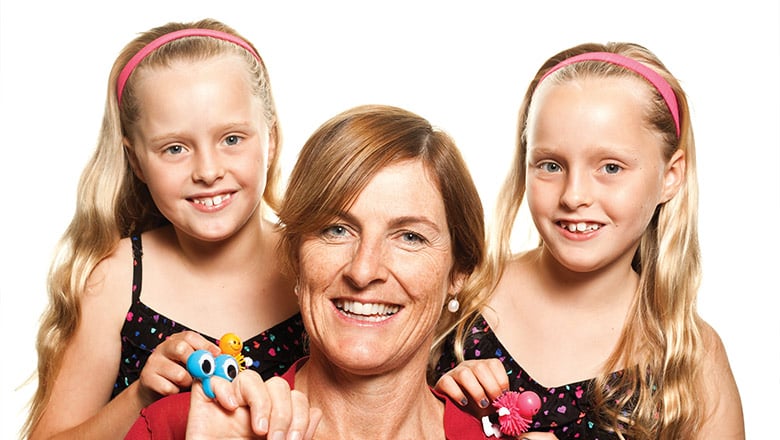 What twins are teaching us about how we learn to talk
What twins are teaching us about how we learn to talk
Hearing your child’s first word is a precious moment for any parent but while most children begin to talk within 12 to 24 months of age, some take much longer.
Parents are naturally concerned when their child is not talking. They want to know why, will they eventually catch up and what impact it will have on their child’s future?
In a world’s only study called ‘Looking at Language’, researchers at The Kids Research Institute Australia are working on answering those questions. For the past 15 years they have been collecting and analysing data from more than 5000 West Australian children aged 2 – 14 years, including 700 sets of twins.
Their research has found 13 per cent of two-year-olds, with otherwise healthy development, are late to start to talk.
Lead researcher Professor Cate Taylor said that while the majority of preschool-age children caught up down the track, one in five late talkers continued to have language difficulties in the school years. The problem is that we cannot predict which children will catch up and which children will continue to have language difficulties.
“Language really is at the heart of everything we do – it is a tool for life. Without good language skills, things we take for granted, like making friends, doing well at school, are a challenge,” Professor Taylor said.
Now that The Kids Research Institute Australia researchers have discovered how many children experience language impairment, they want to know the reasons why.
“While there is no dispute about the crucial role that parents play in their children’s language development, we do know that neurobiology and genetics play an important role in learning to talk.
“While we don’t yet know exactly how, we do know that language impairment is not caused by a deficiency in the child’s language learning environment. In other words, parents don’t cause language impairment.”
Professor Taylor said her team’s research had found that children’s language can fall behind at many different stages of their development and a one off screening at one particular age was not going to be sufficient to identify problems.
“Children need to be screened at different stages throughout their school years,” Prof Taylor said. “Once a language delay is identified, we then need to have a system in place to help bring these children up to the same level of their peers,” Prof Taylor said.
What is late language emergence?
Late language emergence is when a child’s language is below age and gender expectations, that is, they speak few words and do not join words together to form sentences.
What’s next?
The children in the ‘Looking at Language’ study are now 14. Professor Taylor said her team would like to continue to monitor their progress through to the end of their school years and into their chosen career. “We want to know exactly how language development impacts on a child’s academic and career success,” she said.
Professor Taylor also said her team would like to work with government and the health and education workforce to develop a universal system for monitoring children’s language development in childhood and adolescence and provide services and supports that lift health and education standards for all children in Australia
